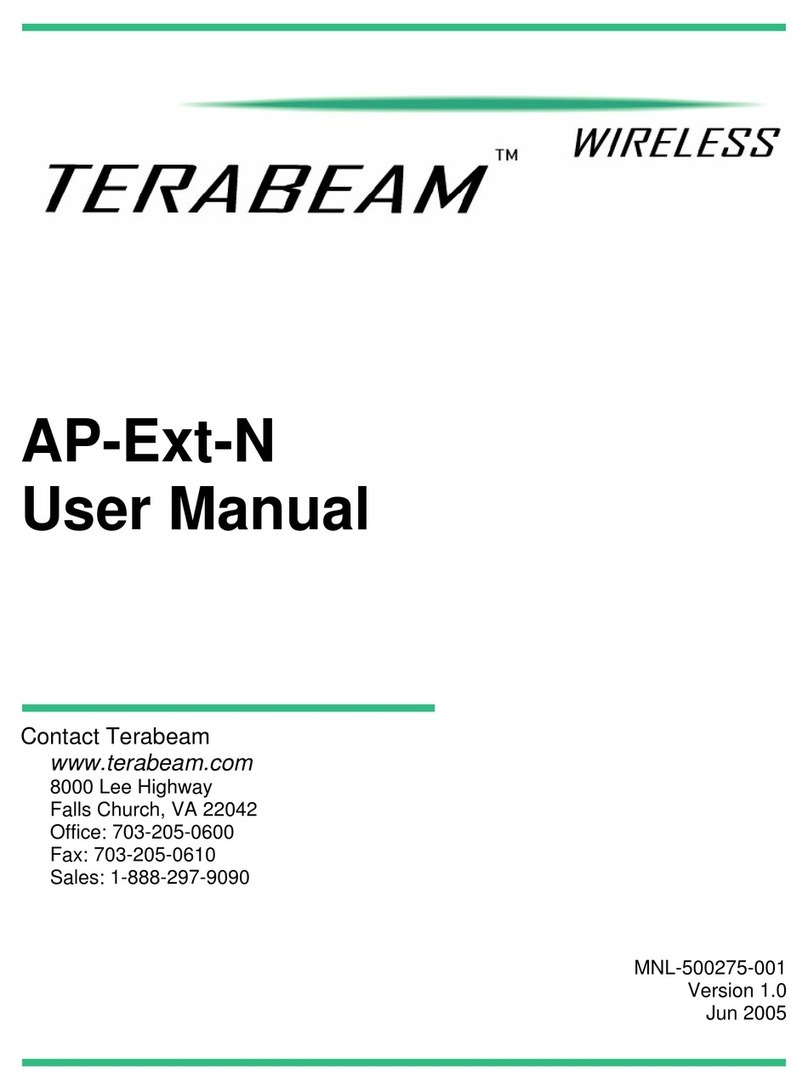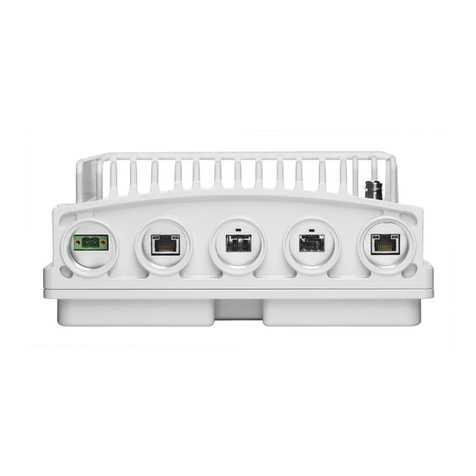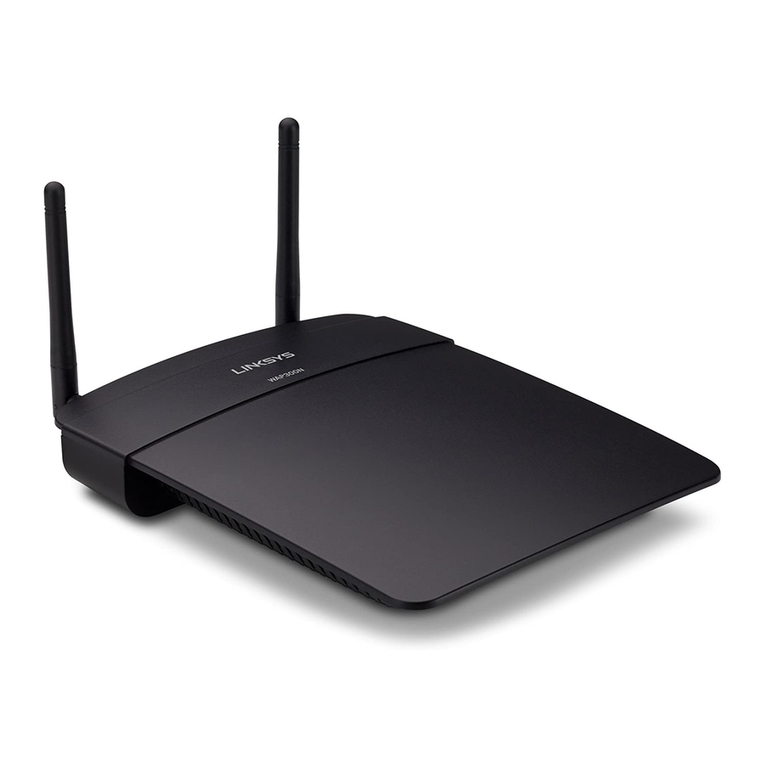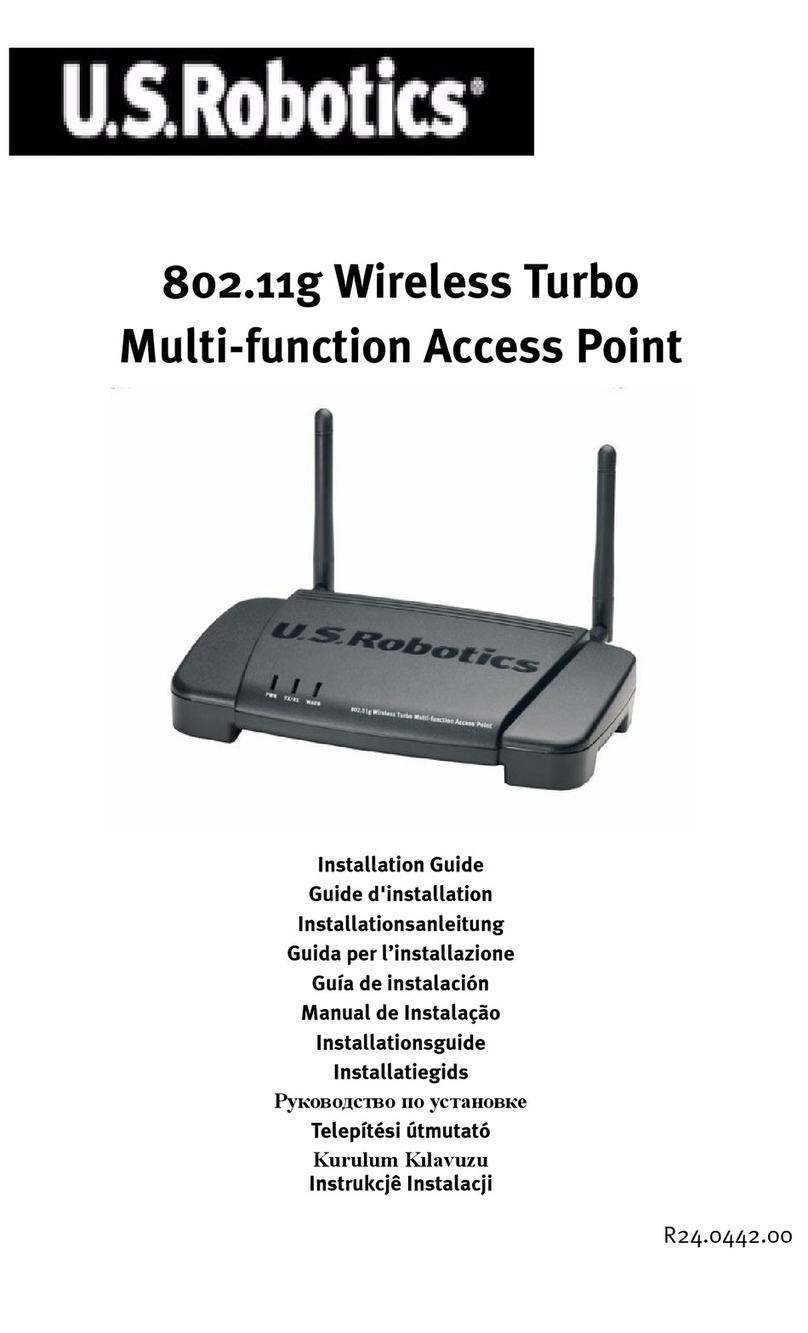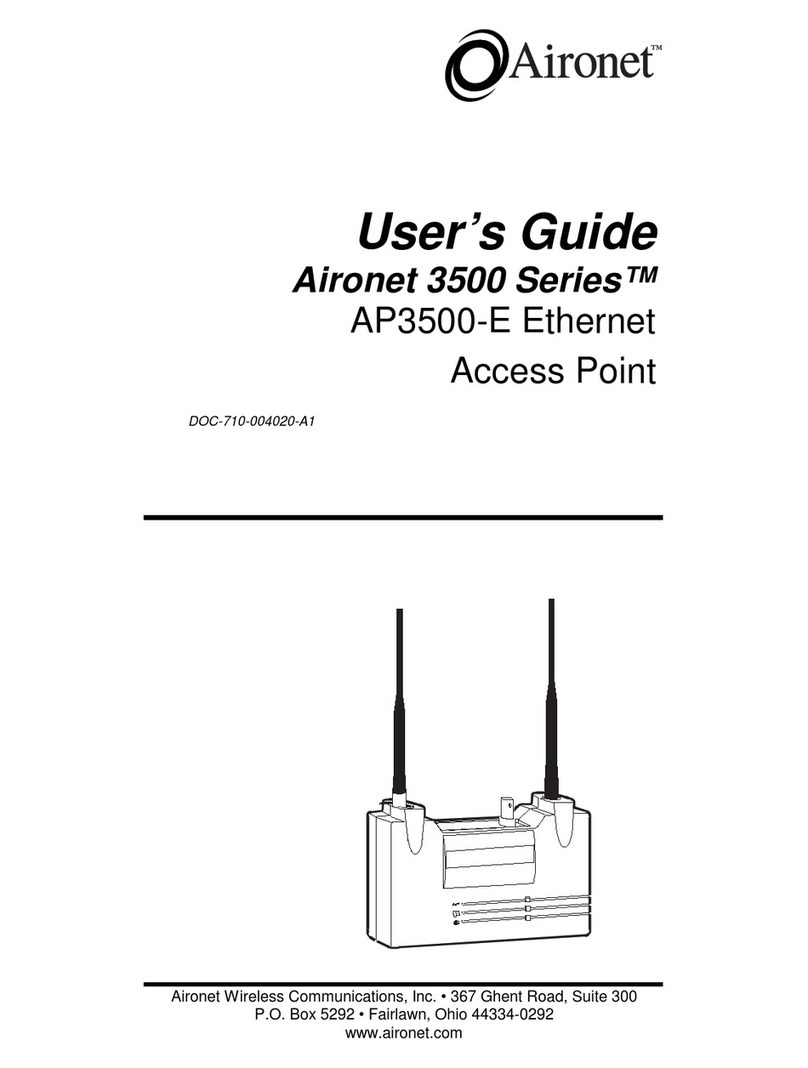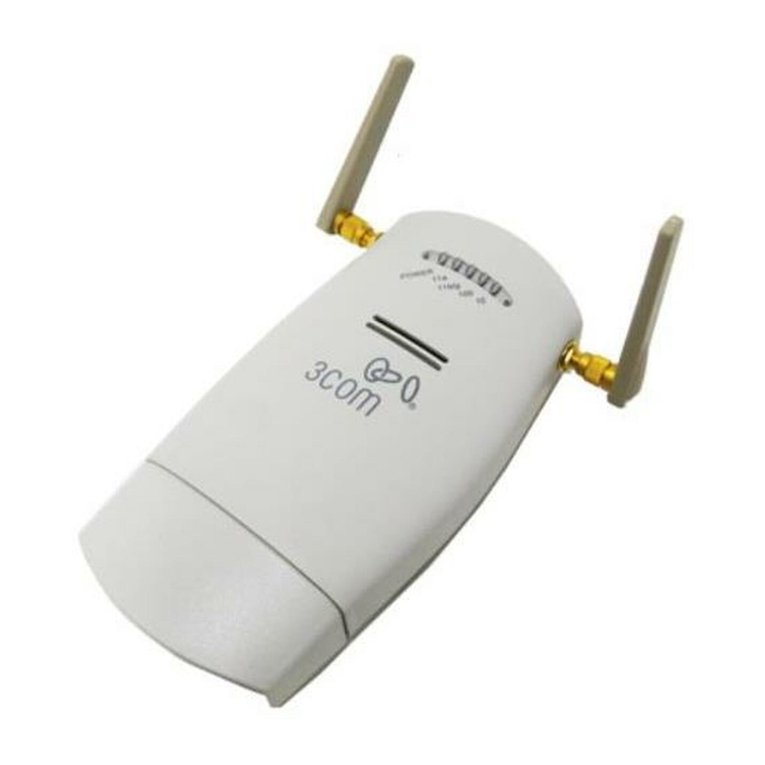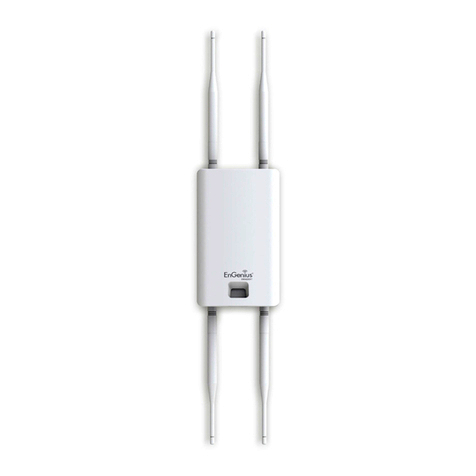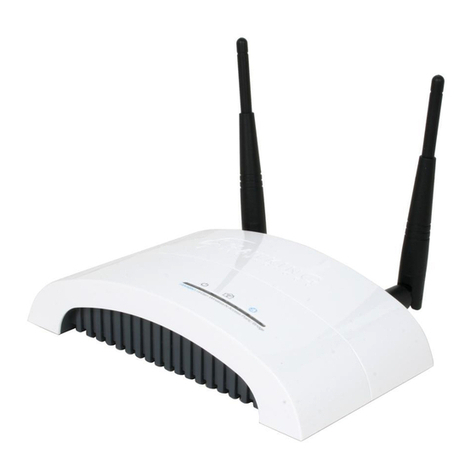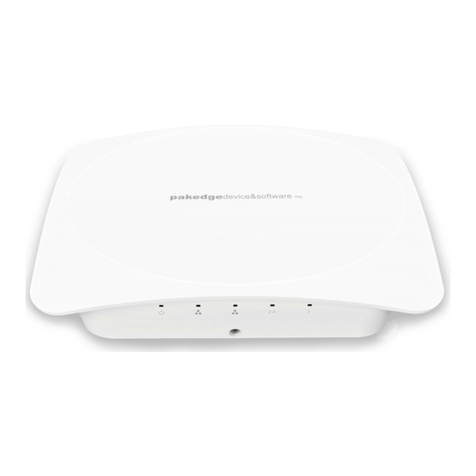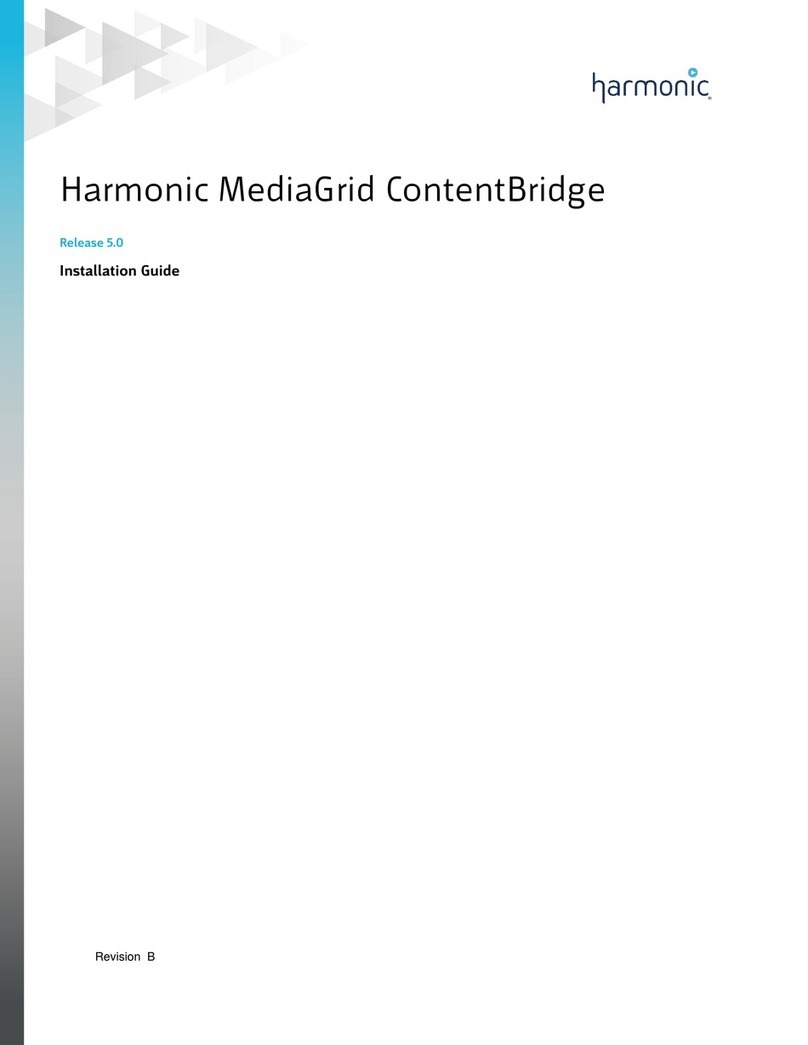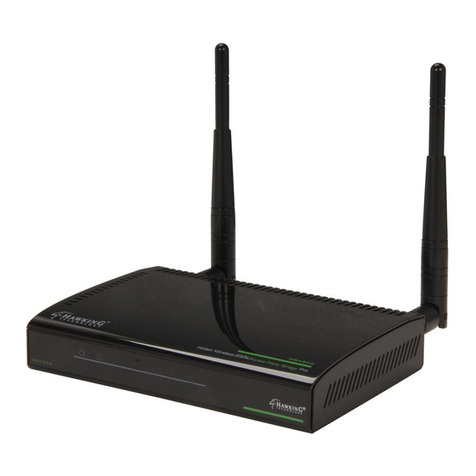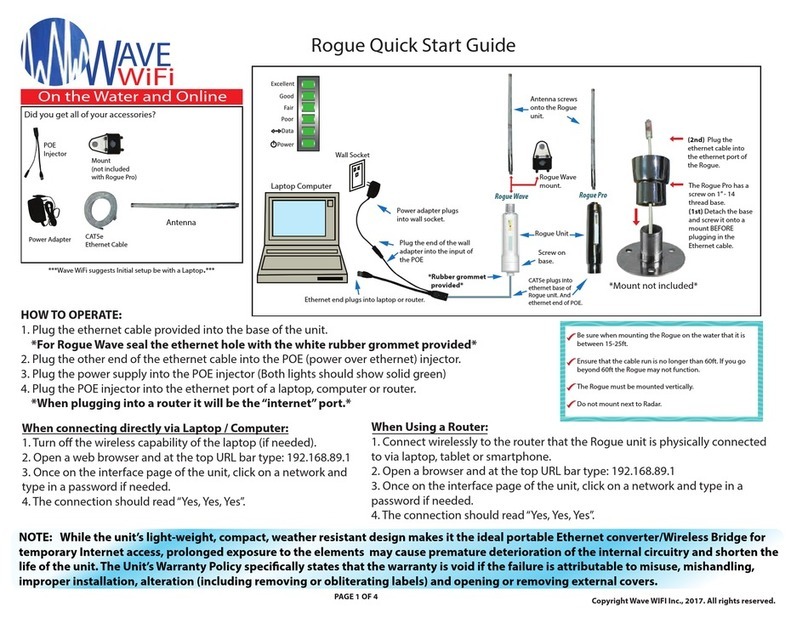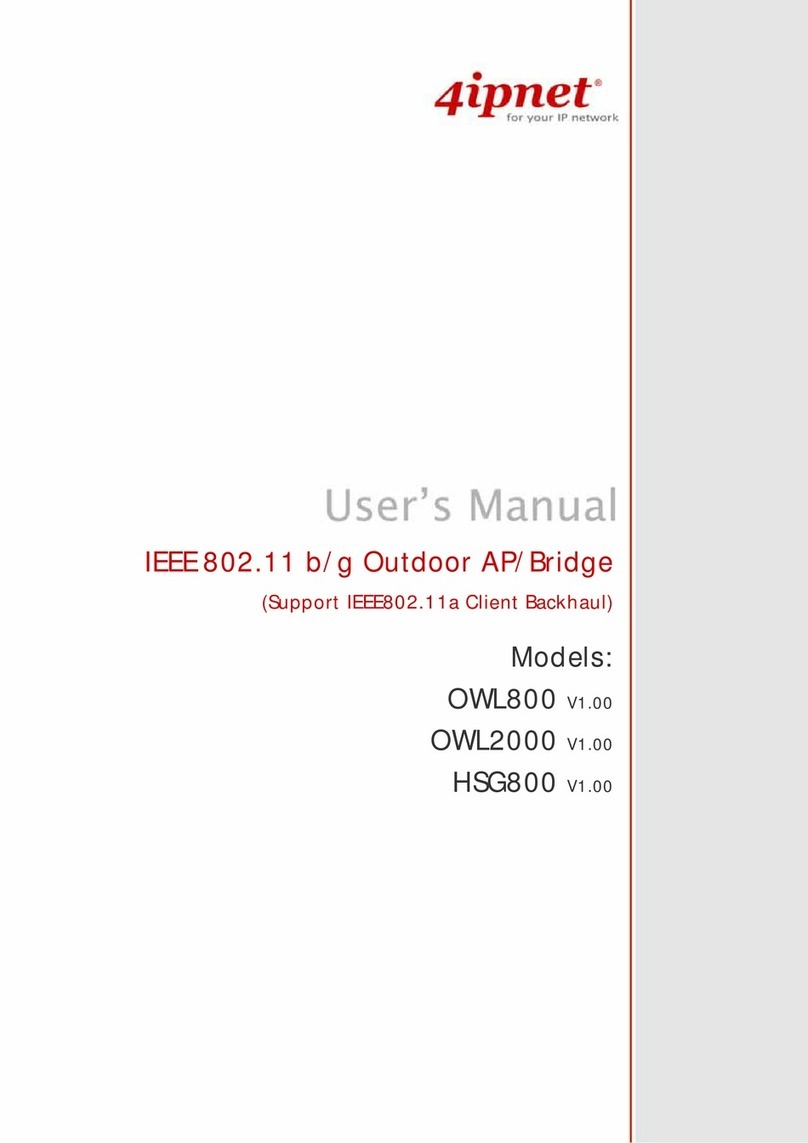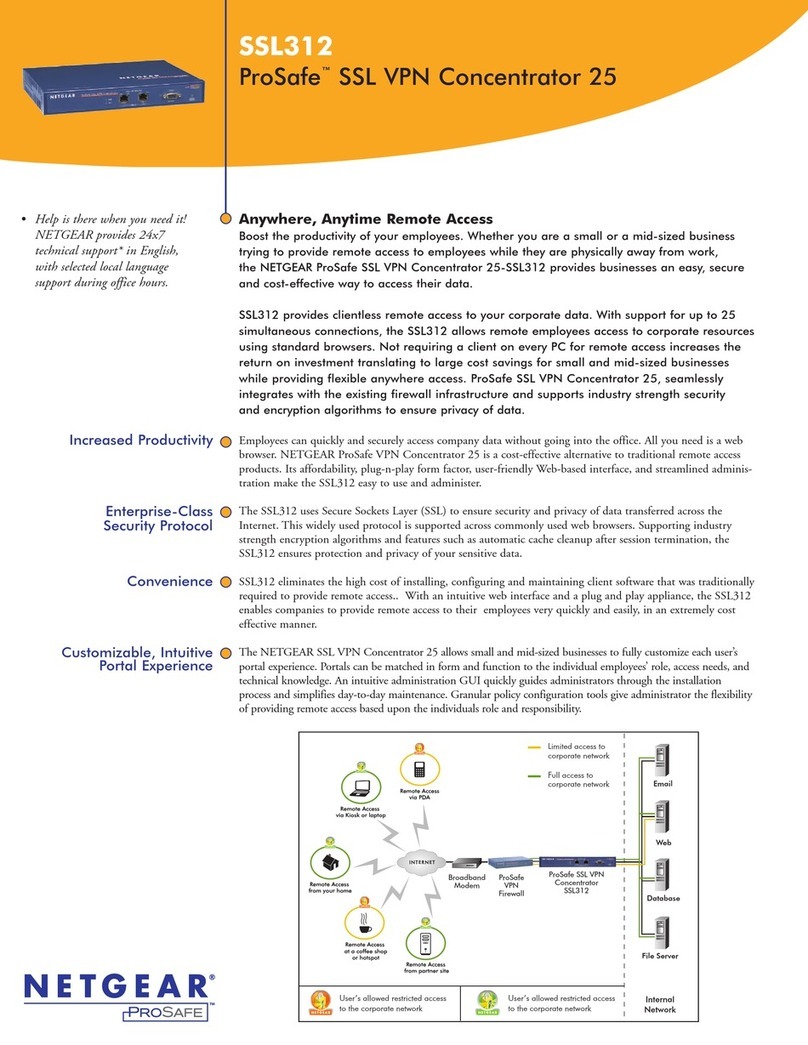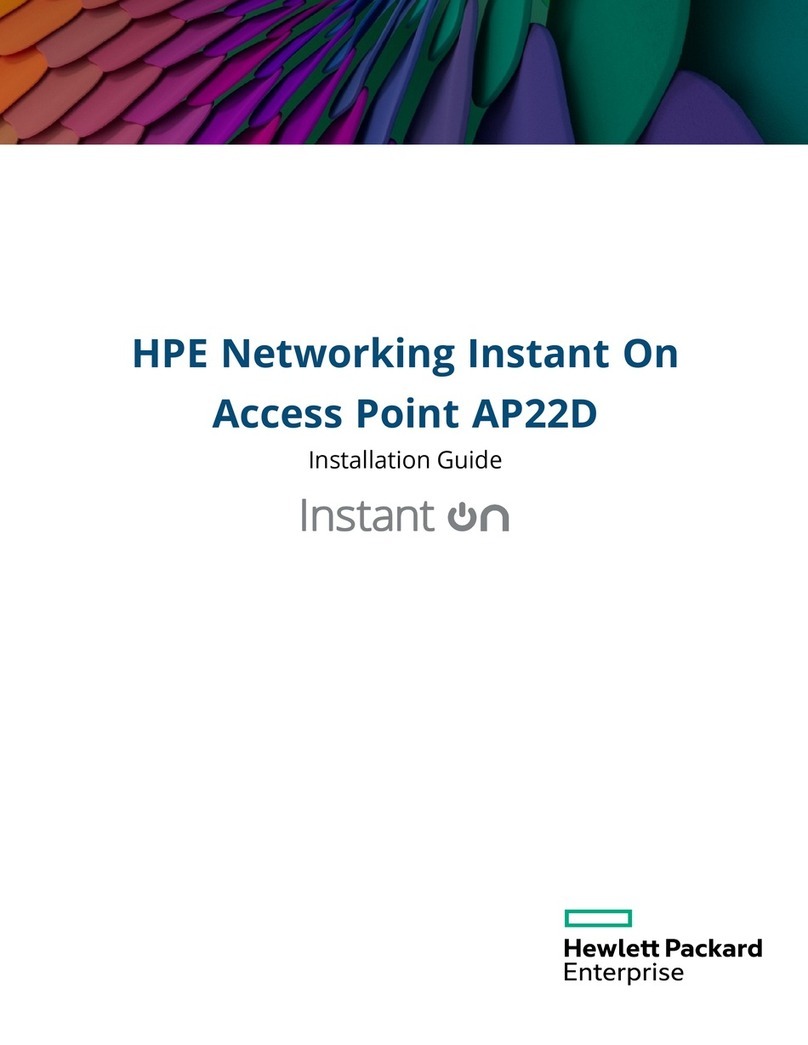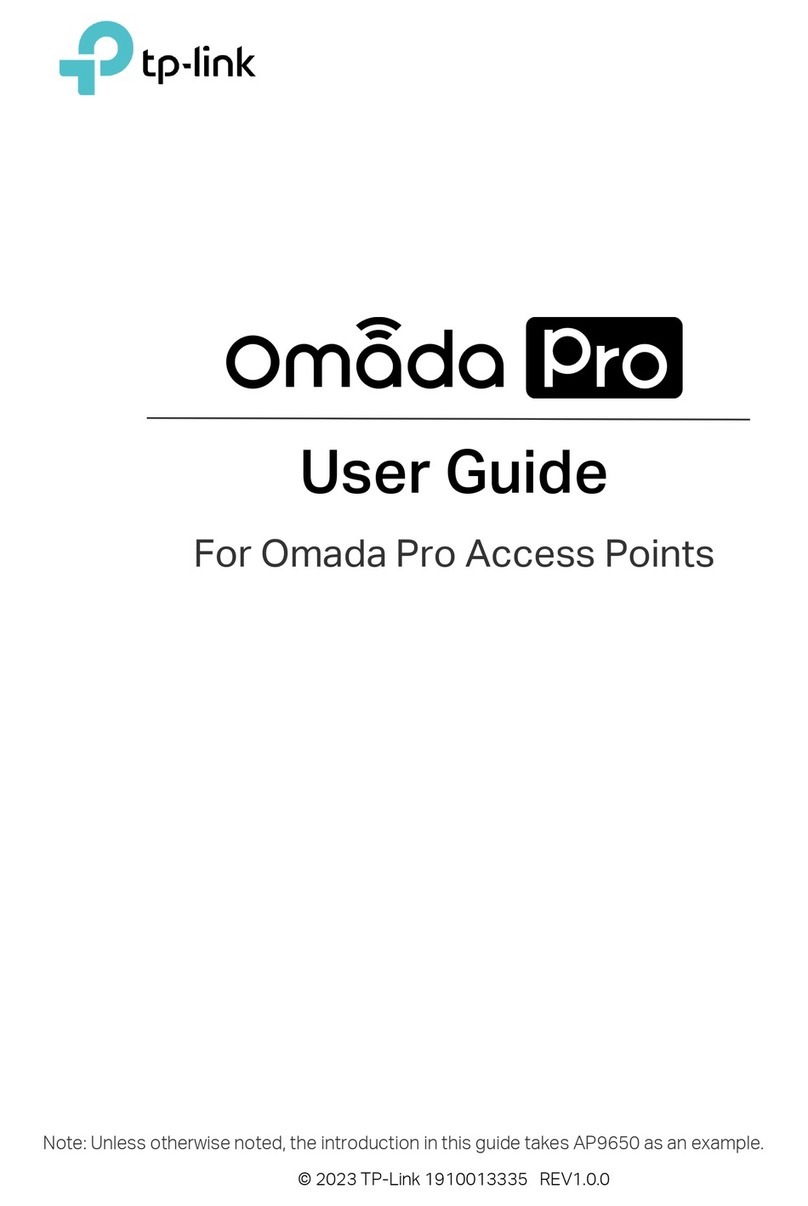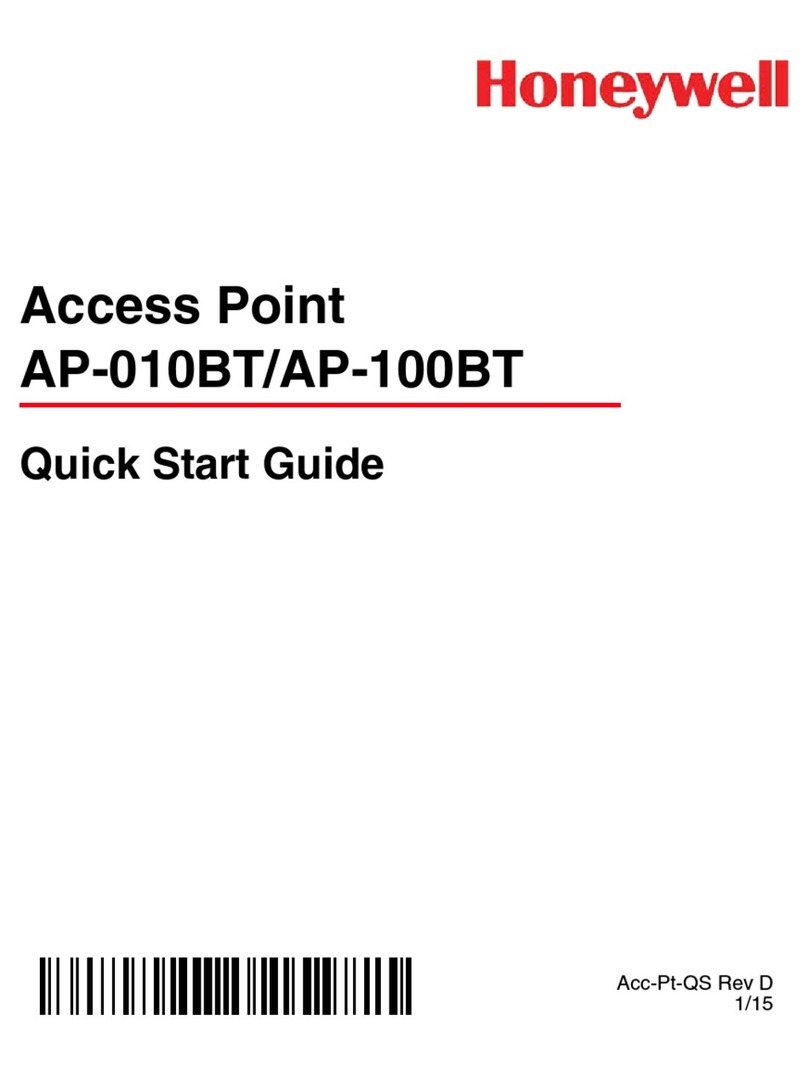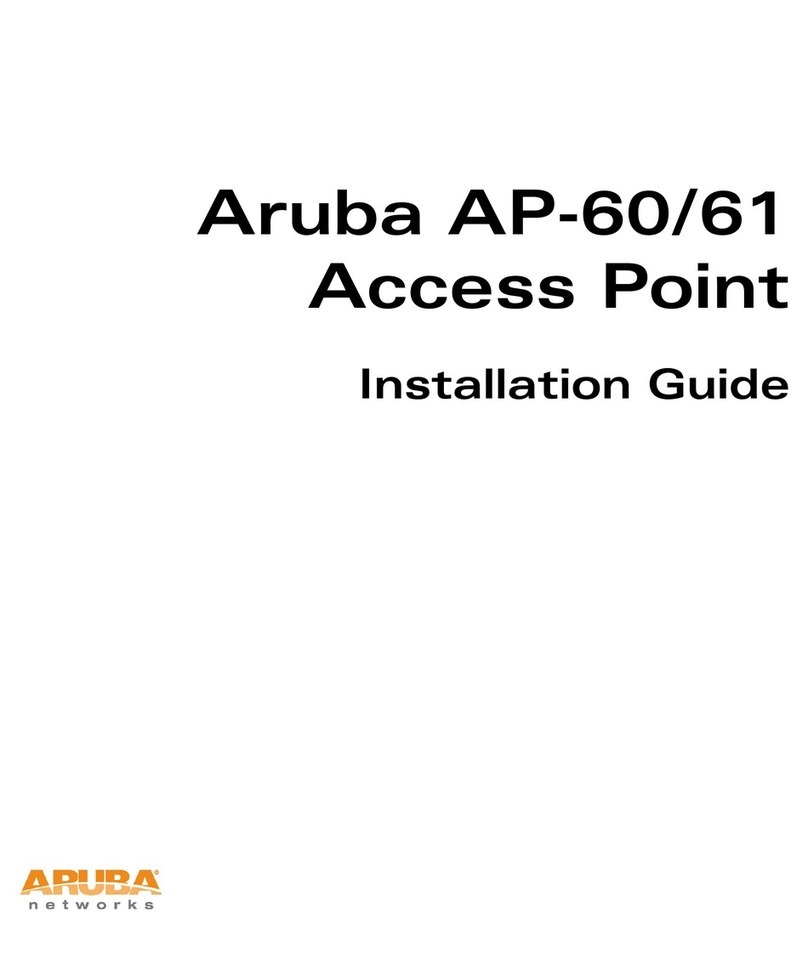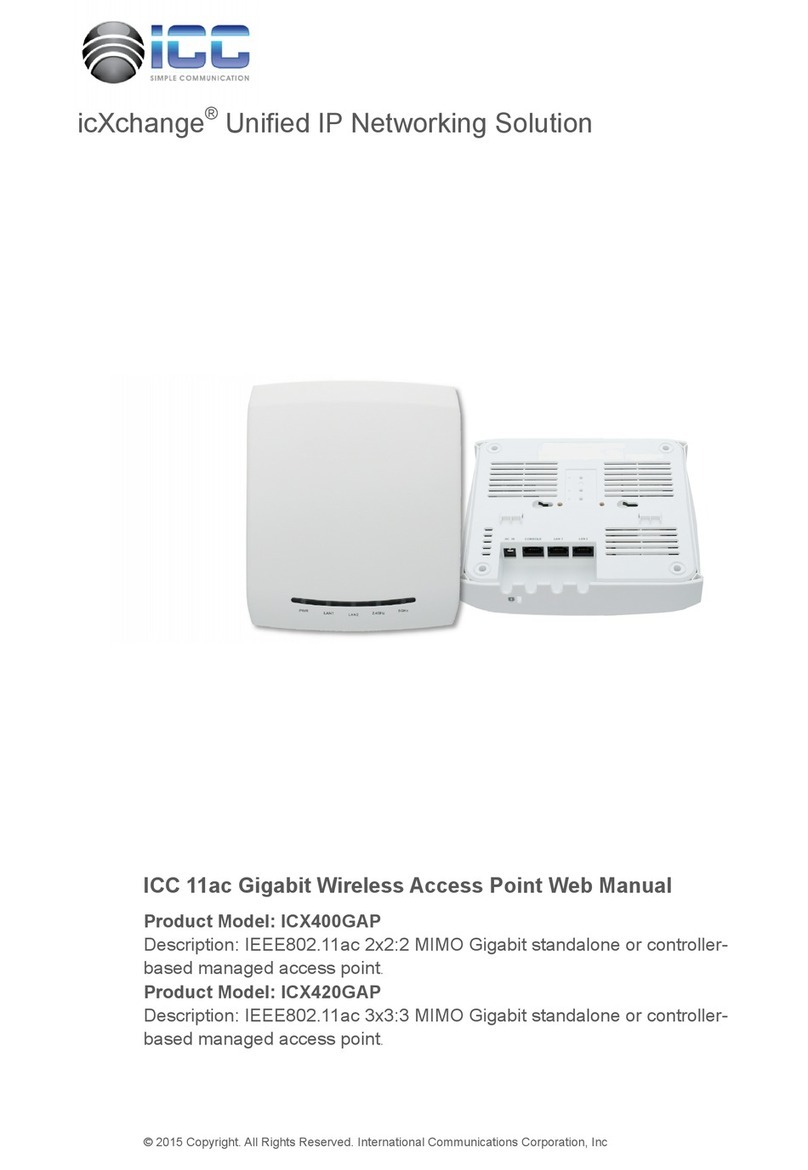TERABEAM BRiB-II User manual

BRiB-II™
User Guide
Contact Terabeam
www.terabeam.com
8000 Lee Highway
Falls Church, VA 22042
Office: 703-205-0600
Fax: 703-205-0610
Sales: 1-888-297-9090
MNL-500252-001
Version 1.0
March 2005

BRiB-II User’s Manual
LIMITED WARRANTY
Terabeam Wireless (Terabeam) warrants that your device is free of defects in material
and workmanship for a period of one year after initial purchase. Terabeam will, in this
period of time, repair or replace, any Terabeam product returned to the factory, freight
prepaid.
The Terabeam warranty covers repairs or replacement (at Terabeam’s option) of the
product only. Terabeam is not responsible for the cost of removal, reinstallation, or
shipping to the place of repair. Terabeam does not extend or modify its warranty period
as a result of repair or replacement.
Terabeam reserves the right to void a warranty and/or make reasonable charges for
repair of a unit if the warranty seal is broken or the unit displays evidence of misuse,
abuse, or tampering.
Terabeam is not responsible for damage to any other equipment or property, or any other
consequential or incidental damages of any kind, whether based on contract, negligence,
or strict liability. Maximum liability shall not in any case exceed the purchase price of the
unit.
Warranties give you (the buyer) specific legal rights. You may also have other rights that
vary from state to state. This warranty is only extended to purchases made in the United
States of America or its possessions.
SPECIAL WARRANTY NOTICE
The warranty is null and void if any of the following occurs:
1. The product enclosure is opened.
2. The connections are not properly waterproofed.
3. The device is installed improperly or with incorrect connectors.
4. The round connector of the outdoor Ethernet cable (if provided) is improperly
plugged into the rear jack of the enclosure.
5. The device or DC Power Injector (if provided) are physically damaged.
6. The device is operated outside the recommended DC power specifications.
7. The device is damaged by extreme forces of nature, lightning, or ‘Acts of God.’
FCC NOTICE
This device complies with part 15 of the FCC rules. Operation is subject to the following two
conditions:
1. This device may not cause harmful interference, and
2. This device must accept any interference received, including interference that may cause
undesired operation.
* Note: The manufacturer is not responsible for any radio or TV interference caused by
unauthorized modifications to this equipment. Such modifications could void the user's
authority to operate the equipment.
These products are labeled with one of the following FCC ID numbers:
FCC ID: NM5-ETH-ANT
NM5-ETH-ANT-LR
Ver 1.0 Page i March 2005

BRiB-II User’s Manual
TABLE OF CONTENTS
Section 1 Overview 1
1.1 Description....................................................................................................................................1
1.2 Bridge-in-a-Box-II Features...........................................................................................................2
1.3 Bridge-in-a-Box-II Kit.....................................................................................................................2
Section 2 Installation 4
2.1 Locating the BRiB-II Antennas......................................................................................................4
2.2 Mounting the BRiB-II Antennas.....................................................................................................4
2.3 DC Power Injector.........................................................................................................................5
2.4 Power Supply................................................................................................................................5
2.5 Hardware Installation ....................................................................................................................6
© 2005 Terabeam Wireless. All Rights Reserved. No part or parts of this document may be
reproduced, translated, stored in any electronic retrieval system or transmitted, in any form or by any
means, electronic, mechanical, photocopied, recorded or otherwise, without the prior written
permission of Terabeam Wireless.
The information in this document is subject to change without notice. Although every effort has been
made to make this manual accurate and complete, Terabeam Wireless assumes no responsibility for
any errors that may appear in this document.
Ver 1.0 Page ii March 2005

BRiB-II User’s Manual
Section 1
Overview
1.1 Description
Terabeam’s second generation of BRidge-In-a-Box (BRiB-II™) is a complete wireless point-to-point (P-P)
solution that bridges two LANs together using the license-free 2.4 GHz band. It consists of two 18 dBi
gain flat panel directional antennas with built-in 802.11b wireless LAN devices, and features the award-
winning industry standard TurboCell
®
software, a protocol which significantly enhances the performance
of outdoor 802.11b systems through the use of adaptive dynamic polling, bandwidth allocation at the
client, and packet aggregation.. The two antennas connect to the LAN’s Ethernet switches on each end
with an outdoor-rated Ethernet cable (ordered separately). The BRiB-II is ideal for connecting two office
LANs together, or for linking a WIPOP site to an Internet backbone.
The two antennas operate at 11 Mbps over-the-air, and feature the highly secure 128-bit WEP-Plus
(Wired Equivalent Privacy) encryption which, if enabled, provides extra security above standard 802.11b
WEP. The link is also transparent to VLAN tags for the most secure link. The BRiB -II will accommodate
virtually an unlimited number of client MAC addresses on each side of the link. The MAC addresses of
the LAN clients on one side appear on the other side of the link wirelessly. It is remotely configured and
managed with the Windows-based Terabeam Configurator software.
With the wireless client adapters built right into the antennas, professional antenna installation is not
required. All that is needed is to ensure that the antennas are optimally aimed and have clear line of sight
(LOS) to each other. The antennas can be mounted either vertically or horizontally polarized. Selecting
the appropriate polarization for your area will minimize or even completely eliminate interference from
other outdoor installations in the 2.4 GHz band.
Two versions of the BRiB-II are available: the standard series BRiB-II with an integral 18 dBi gain flat
panel antenna, and the BRiB-II–LR with the addition of an integrated bi-directional fixed amplifier to boost
range and improve reception. The WLAN device located in the antenna gets its power from the DC Power
Injector which puts DC power onto the Ethernet cable. Up to 300 feet of Ethernet cable (ordered
separately) between the DC injector and the antenna can be used with no signal loss.
Both the BRiB-II and the BRiB-II–LR version use a 110/220 VAC to 48 VDC power supply.
Ver 1.0 Page 1 March 2005

BRiB-II User’s Manual
1.2 Bridge-in-a-Box-II Features
Key Features
•Complete 2.4 GHz wireless bridging system
•Easy to install and configure
•Bridges two LANs together transparently
•Supports VLAN bridging (802.1q protocol)
•Plugs directly into an Ethernet Switch or Router on each side of the link
•802.11b radio built right into the 18 dBi gain panel antenna
•-LR models feature a built-in amplifier and provide the maximum range possible
•Weatherproof: designed and rated for outdoor use
•Provides extended range coverage by focusing the radio signal
•Antenna and Ethernet cable are designed for outdoor use
•Antenna is lightweight and thin, just 1.25 inch thick and 15.5 inches square
•Can be mounted in either vertical or horizontal polarization
•Mounts either to a wall or antenna mast of up to 1 3/4 inches in diameter
•Flat panel antenna offers 18 dBi gain and 18
o
beamwidth
•Transmit power of 2 Watts EIRP and 16 Watts EIRP on –LR model
•Line of sight range up to 3 miles or more possible (10 miles or more with the –LR version)
•Up to 4.5 mbps actual throughput
•FCC Part 15 Certified for license-free operation (11 channels USA)
•Professional installation is not required by FCC Part 15 rules
•No need for bulky RF cables or for fragile RF adapter cables
•System is optimized to provide for the maximum possible range without having to worry about
coax cable loss
•DC power for electronics in the antenna are carried up the Ethernet cable (Power Over Ethernet,
POE)
•Windows-based Configuration Software
•Can be configured and monitored remotely from anywhere in the network
•Operating temperature range: -20°C to +50°C
1.3 Bridge-in-a-Box-II Kit
Each BRiB-II kit includes the following (refer to Figure 1.1a):
•Two 18 dBi gain flat panel antennas with built-in radios (-LR models feature an integrated bi-
directional amplifier for increased transmit power and receive signal sensitivity for longer range)
•Sturdy steel wall/mast tilt-bracket mounts
•Two Cat 5 DC Power Injectors
•Two 110/220 VAC to 48 VDC wall adapters
•CD-ROM with Windows-based software and documentation
A Terabeam outdoor Ethernet cable must be ordered separately. Available lengths are 50, 100, 200, or
300 feet (maximum length).
The latest software and User’s Manuals can also be found at:
http://www.ydi.com/support/downloads.php,and
http://www.ydi.com/support/documents.php.
Figure 1.1b shows a typical application of the BRiB-II.
Ver 1.0 Page 2 March 2005

BRiB-II User’s Manual
Figure 1.1a – BRiB-II, 110/220 VAC Power Supply, Mounting Brackets, and DC Power Injectors
Figure 1.1b – Typical Application
BRiB-II Side A Antenna
Point-to-Point (P-P) Link
BRiB-II Side B Antenna
Ver 1.0 Page 3 March 2005

BRiB-II User’s Manual
Section 2
Installation
Safety Warning
This antenna/transmitter device must be fixed-mounted on outdoor
permanent structures with a separation distance of at least 2 meters
(6.56 feet) from all persons. Users and installers must adhere to the
antenna installation instructions and transmitter operating conditions in
order to comply with the FCC’s RF exposure requirements.
CAUTION!
2.1 Locating the BRiB-II Antennas
The most important aspect of setting up the BRiB-II antennas is their location and aiming. For maximum
range (up to several miles), it must have clear, unobstructed line of site (LOS) and Fresnel Zone between
them. The BRiB-II antennas are designed to be installed outdoors. For maximum range and the
strongest signal, the two BRiB-II antennas must literally “see” each other in order to be connected. If they
do not have this clear “line of site” (LOS), you will likely not get a reliable, long-range wireless connection.
The only way to accurately determine your coverage area is to put up the BRiB-II antennas in the best
locations available and run some tests.
NOTE: It is strongly recommended that you configure and test the units prior to deploying them in the
field. Set up a “mini-network” that resembles your actual configuration as close as possible.
By using such a mock-up, troubleshooting potential problems will be much easier than if you
already installed the equipment in the field. Read through this entire Section 2 to understand
how to install the hardware.
2.2 Mounting the BRiB-II Antennas
The BRiB-II antennas can be mounted either vertically or horizontally polarized using the hardware
included with the unit. The label located on the back of the antenna contains an arrow indicating the
antenna’s polarization. Please note that both ends of the link must use the same polarization. They can
be mounted to a mast or pipe as shown in Figure 2.1.
It is very important that the Ethernet connector on the antennas be properly waterproofed. Ensure that a
high quality all-weather resistant electrical tape and/or other water sealant method, such as Permagum or
equivalent, is utilized. Silicon sealants are not recommended since they are hard to work with, do not
ensure a 100% waterproofing of the connectors and are difficult to remove, if ever necessary.
The antenna itself or the mast where it is bolted to should be connected to an Earth ground. Fig. 2.1
shows the possible grounding points that you can use.
Important: Please notice that the two units are clearly identified as side A and side B of the P-P link (see
Fig. 2.2). The two units are not interchangeable.
Ver 1.0 Page 4 March 2005

BRiB-II User’s Manual
Possible Grounding Points
Polarization Arrow
Figure 2.1 shows the antenna in a horizontally
polarized installation. It must be carefully
aimed at the other antenna and be mounted
with the same polarization. The housing is
sealed to prevent water build-up in the
antenna. The round connector must also be
sealed after it is plugged into the antenna. Be
sure to provide strain relief for the Ethernet
cable as well.
Horizontal polarization is generally better since
most other outdoor systems use vertical
polarization. By mounting the BRiB-II
antennas horizontally polarized, you will
minimize interference from these systems.
Figure 2.1 – Outdoor Pole Mount Installation
Figure 2.2 – BRiB-II Labels Identifying Side A and Side B of the P-P Link
(Note: the two units are not interchangeable)
2.3 DC Power Injector
The Cat 5 DC Power Injector is not in a waterproof enclosure and must be protected from the weather. It
can be permanently mounted to a surface using the double stick tape found on the back of it.
2.4 Power Supply
The BRiB-II antennas come with a 110/220 VAC to 48 VDC power supply that has a standard barrel plug
[center pin positive (+) tip and outer ring negative (-)].
Ver 1.0 Page 5 March 2005

BRiB-II User’s Manual
Former BRiB-II units used a 15 VDC Power Supply. Care must be
followed not to confuse the current with the former units since this may
damage a former 15 VDC unit if a 48 VDC Power Supply is used with it.
Likewise, operating a current BRiB-II version with less than 48 VDC will
cause improper operation. Any damage caused by these actions will not
be covered by the factory warranty and will be a billable repair.
The current units have an LED label which clearly identifies them as 48
VDC units. Please see Figure 2.5 for the location of the label and
description of LEDs.
CAUTION!
2.5 Hardware Installation
Perform the following procedures for both antennas once you have determined their optimal location:
1. Use the brackets and screws to mount the flat panel antenna to a pole with a maximum diameter of
up to 1 3/4 inches.
2. Ensuring that there is no DC power applied to the cable, plug the 6-pin N-male round connector of the
outdoor Ethernet cable into the rear jack of the flat panel antenna, making sure the notch on the
connector is correctly aligned with the tab on the jack as shown on Figure 2.3. Turn the round locking
nut clockwise as you push in until it securely fastens onto the jack. Please verify that the round
connector is properly plugged into the rear jack of the antenna prior to connecting DC power
because it is possible to push it in the wrong way if enough force is used. If DC power is applied and
the connector is not properly plugged, damage to the electronics of the unit or the connector itself
may occur which will not be covered by the factory warranty.
Figure 2.3 – Plugging the Outdoor Ethernet Cable
Plug the connector into the jack by
aligning the notch with the tab
Caution: Be sure DC Power is not applied
when plugging the cable
If DC Power is applied while you are attempting to insert the round
connector into the jack, it is possible that, as you rotate the plug in an
effort to find the key, DC power pins will momentarily touch the Ethernet
pins. If this happens the Ethernet circuitry on the board will be
damaged. Also, do not apply excessive pressure when you insert the
round connector or the pins will pop out. Any damage caused by this
action will not be covered by the factory warranty and will be a billable
repair.
CAUTION!
Ver 1.0 Page 6 March 2005

BRiB-II User’s Manual
3. Attach the other end of the outdoor Ethernet cable to the Cat 5 DC Power Injector at port RJ-45
labeled “To Antenna.”
4. Connect the Ethernet cable labeled “To PC/Router” from the Cat 5 DC Power Injector into a regular
port on your router, switch or hub. If you connect to a laptop or PC, use a cross-over cable or adapter.
5. Perform an Earth ground connection to any of the rear bolts of the unit, the mounting brackets, or the
mast (if metallic) (refer to Fig. 2.1). For maximum protection, also connect the metal wire of the surge
protected DC Injector to ground as shown on Figure 2.4.
6. Connect the barrel plug of the power supply to the “DC Power” jack on the Cat 5 DC Power Injector,
then plug the Power Supply into an AC outlet. Check that the Power LED turns on. If there is traffic
over the wireless medium the Wireless Link LED should be flashing. If the Ethernet port is active the
Ethernet Link LED should be flashing. Radio Status should be off, it turns on only when there is a
malfunction of the internal card (refer to Fig. 2.5). Also, a water-proof plug is located next to the LED
label. You may remove this plug to gain acces to a reset push button inside the BRiB-II for disaster
recovery, or if so instructed by your Terabeam support representative during troubleshooting or
technical assistance.
7. Configure the BRiB-II using the Configurator software. Please refer to the Marquee Series
Configuration Guide, available as a pdf file on your CD ROM. Also, an online help is available by
pressing F1 or clicking Help-> Index from the main screen.
Figure 2.4 – Installation of the Terabeam Surge Protected DC Injector
for Maximum Grounding Protection
Ground Wire
Power Supply
AC Power
RJ-45 Ethernet Connector
To Router, Switch, or Hub
(If connected to a PC, use a
cross-over cable or adapter)
To BRiB-II Antenna
Terabeam Surge
Protected DC Injector
Water-Proof Plug –
Remove to Gain Access to
Reset Push Button
(see Caution Note on Section 2.4)
48 V System
Figure 2.5 shows the BRiB-II label located on
the back of the flat panel. LEDs appear to the
right that indicate the status of Power, Radio,
Wireless Link, and Ethernet Link.
Figure 2.5 – BRiB-II Label and LEDs
Ver 1.0 Page 7 March 2005
Table of contents
Other TERABEAM Wireless Access Point manuals
